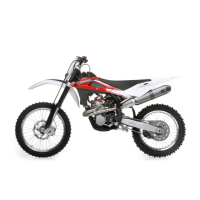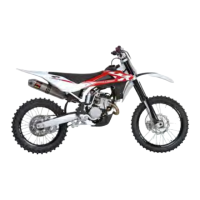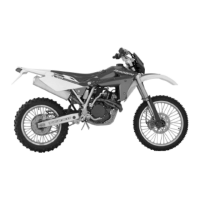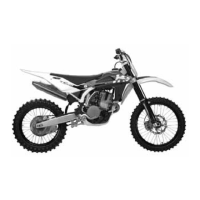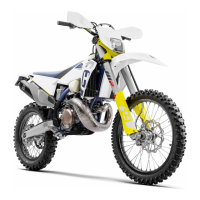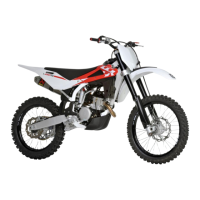Bleeding the rear braking system
A long travel and mushy feel of the brake pedal indicate that there is air
in the system and the brake needs bleeding.
Bleeding procedure is as follows:
- Remove reservoir cap (A) (21 mm wrench) and diaphragm and ll with uid
(DOT 4).
- Attach a clear plastic hose to the calliper bleed valve (1) and place the other
end of the hose in a vessel.
- Press the pedal (2) fully down.
- Loosen the bleed valve and drain the uid (only air at rst), then slightly close
the valve.
- Release the pedal and wait a few seconds. Repeat the process until you see
only uid coming out of the hose.
- Tighten the bleed valve to the specied torque and check uid level (B) in the
reservoir before retting the cap (A). If the bleeding procedure was performed
correctly, the pedal will no longer have that mushy feel. If not so, repeat the
procedure.
Fluid level inside the reservoir shall never drop below the minimum
notch during the bleeding procedure.
If brake lever or brake pedal feel mush after a fall or a repair resulting
in loss of braking, bleed the circuit as described above.
Bleed valve tightening torque: 12-16 Nm, 1.2-1.6 Kgm, 8.8-11.8 ft/lb.

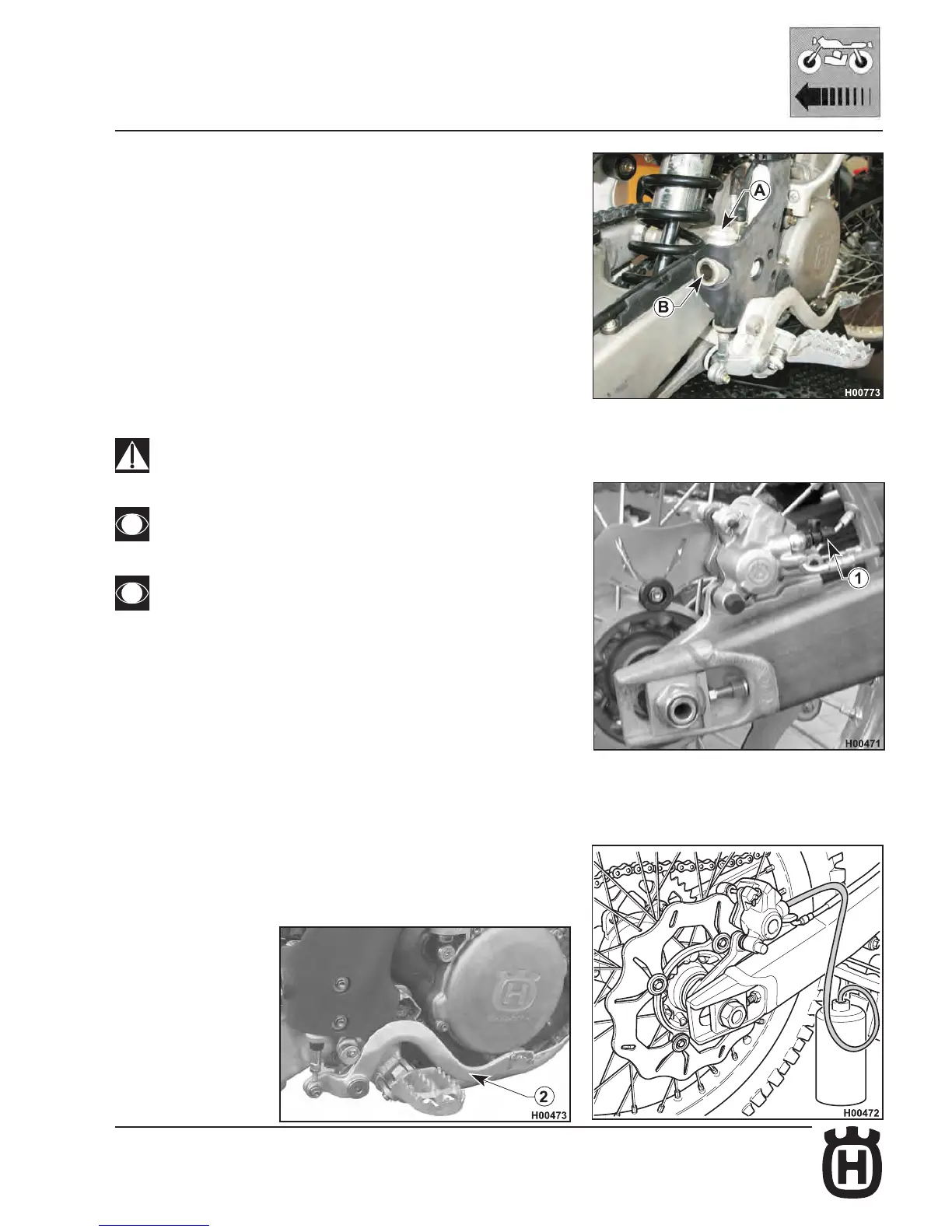